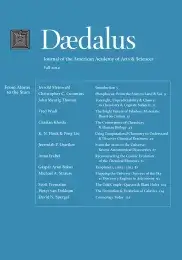Mapping the Universe: Surveys of the Sky as Discovery Engines in Astronomy
Astronomers can map the sky in many ways: observing in different regions of the electromagnetic spectrum, obtaining spectra of stars and galaxies to determine their physical properties and distances, and repeatedly observing to measure the variability, explosions, and motions of celestial objects. In this review I describe recent surveys of the sky astronomers have carried out, focusing on those in the visible part of the spectrum. I describe in detail the Sloan Digital Sky Survey, an ongoing imaging and spectroscopic survey of over one quarter of the celestial sphere. I also discuss some of the major surveys planned for the next decade, using telescopes both on the ground and in space.
Astronomy is an observational science. Unlike chemistry or biology, the objects of study in astronomy are far removed, at distances to which we will not have the capability to travel using even the most advanced foreseeable technology. This means that we cannot carry out experiments on the stars and galaxies that are the bread and butter of our discipline; all the information we can glean about them is the result of measuring the tiny fraction of the light that they emit that happens to fall on our eyes and our telescopes. We then interpret these data in the context of the laws of physics to draw conclusions about the nature of these distant bodies, allowing us to infer, for example, the conditions in the cores of stars, or the existence of new forms of matter that are unknown from our experience and experiments here on Earth.
The range of phenomena in the universe is vast, and the rate of astronomical discovery today tells us that we are far indeed from a complete understanding of all that the universe has to teach us. This essay describes one of the most productive approaches we have toward astronomical discovery; namely, using our telescopes to map the heavens and create . . .
